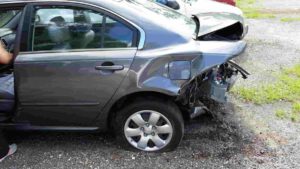Eating a balanced diet and exercising daily may contribute to your health in the long run, but the single greatest risk facing young Americans has nothing to do medical complications. According to the Centers for Disease Control and Prevention (CDC), motor vehicle collisions are the leading cause of death among people in the United States who are up to 30 years old.
You can avoid causing a catastrophic crash by following the rules of the road and remaining alert, attentive, and sober when behind the wheel. Since you have no control over the other drivers around you, though, there are steps you should take to reduce the risk of sustaining serious injuries in the event of a collision. This includes:
- Sitting with your back against the seat and both feet firmly on the floor;
- Adjusting the headrest so it can support the head and neck adequately in a forceful impact; and
- Repositioning the seat so it is the optimum distance from the airbags for a person of your size.
Of course, none of the above tips are useful if you forget the single most important step for protecting yourself in the event of a wreck: putting on your seat belt. The CDC reports that more than half of all accident victims who sustain fatal injuries were not wearing a safety restraint at the time of the crash.

More than half of all people who die in car accidents were not wearing a seat belt at the time of the collision.
How Much Do Seat Belts Really Help?
At the end of the day, accident statistics indicate that seat belts save lives. Among front-seat passengers and drivers, for example, researchers have determined that wearing a proper safety restraint reduces the risk of serious injury by 50 percent and the risk of death by 45 percent. In 2015 alone, experts estimate seat belts saved nearly 14,000 lives, according to the CDC.
When it comes to seat belt use, young adults between the ages of 18 and 24 are less likely to wear safety restraints than older drivers and passengers. Additionally, men are less likely than women to wear seat belts when riding in a vehicle.
The Cost of Not Wearing a Seat Belt
When you fail to put on a safety restraint upon getting behind the wheel, you risk more than just your life in the event of a serious collision. Those who survive an impact despite being unrestrained also risk their financial security.
If you get hurt in a crash that was not your fault, you have the right to hold the liable party accountable for all the damages that you incur as a result; however, if you contributed to the severity of your injuries in some way—by not wearing a seat belt, for example—it could significantly reduce the amount of compensation to which you are entitled.
The precise formula varies by state, but in general, an accident victim’s final settlement will be reduced by the percentage that is proportionate to his or her liability for the damages. That means if the claimant was not wearing a seat belt and the car insurance adjuster can prove doing so would have minimized the damages considerably, the injured party will only be able to recover a fraction of the total costs that he or she incurred.
In an attempt to compel motorists to practice safe driving habits, every state has implemented some kind of seat belt law. According to the Governors Highway Safety Association, the only state without a primary or secondary seat belt law is New Hampshire; however, they still have a primary child safety law that applies to all drivers and passengers who are younger than 18.
You may not be able to avoid every motor vehicle collision, but you can protect yourself and loved ones in the event of a crash by buckling up every time you hop in the car. This will protect not only your health and safety in the event of a wreck but could also strengthen any subsequent injury claim.
